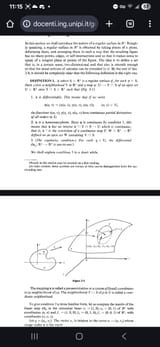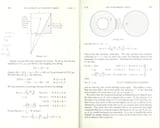>>16769118 (OP)
I too had certain "issues" with the book. Thing is, I don't recall too much specifically what it was. I think it was something like he didn't explain as much as he could IMO, and it happened fairly often.
Here in the picture provided is the only example I can think of; the proof itself is pretty simple. But then ONE PAGE LATER, he makes the remark that continuity is a must, when he never fucking mentions it in the proof at all. Took me a day or two to figure it out. Yes, it indeed true that continuity is required. So why is it, if you yourself haven't figured it out in 1-2 minute? Maybe I'm just dumb and it's really obvious to you guys. Like, for me, I think I was okay with the entire 1st chapter (it's only a 5 chapter book and the first 4 are the ones people should critique bare min, as the last is a lil diff). For this comment
>>16770270, idk man, I personally don't love this as an example cause it feels simple enough to me. But maybe both of us aren't the target audience to this book, or maybe the book itself ain't amazing if many people are having issues, regardless of whether the particular examples of our difficulties are different.
If you haven't figured out why continuity is required, here is a "light" hint - light in that, to me, it isn't exactly a great hint that's help me out that much. But the issue INVOLVES (not exactly is) the hint. (don't read the greentext after this if you don't want the hint):
>INVERSE FUNCTION THEOREM
>Let [math] F: U \subset R^n \rightarrow R^n [/math] be a differentiable mapping and suppose that at [math] p \in U [/math] the differential [math] dF_p: R^n \rightarrow R^n [/math] is an isomorphism.
(means the matrix is invertible).
>Then there exists a neighborhood [math] V [/math] of [math] p [/math] in [math] U [/math] and a neighborhood [math] W [/math] of [math] F(p) [/math] in [math] R^n [/math] such that [math] F: V \rightarrow W [/math] has a differentiable inverse [math] F^{-1}: W \rightarrow V [/math]









